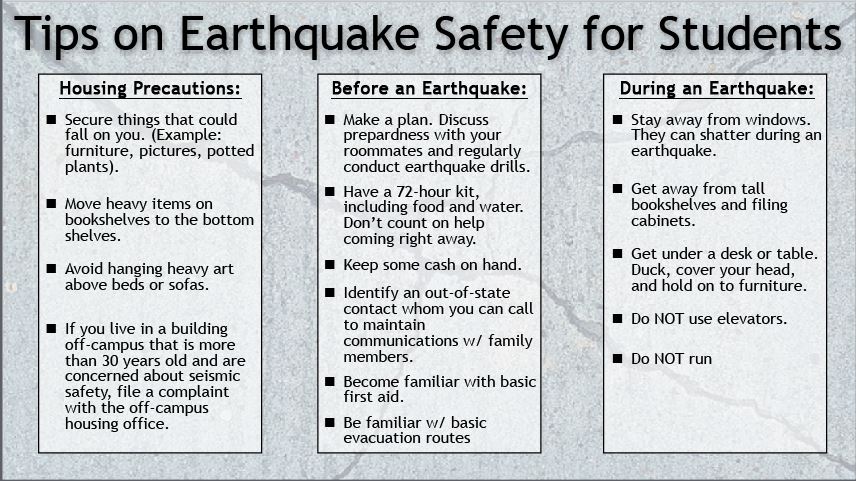The Wasatch Front is overdue for a large earthquake — one that many campus buildings and student housing complexes might not be able to withstand, according to BYU geology professor Ron Harris.
Harris said the Wasatch Fault, which Provo sits on top of, has a magnitude 7 or above earthquake about every 320 years, “and it’s been over that amount of time since we’ve had one.”
“So in that sense we’re kind of overdue for a big one,” Harris said.
And the buildings constructed before 1990 may not able to withstand a large earthquake, according to Harris. He said older buildings not built to current seismic code are dangerous because if the walls are not connected to the foundation, they lack lateral support.
“The walls and the heavy ceiling on top of them gives them vertical strength, but not horizontal strength,” Harris said. “Earthquakes move buildings sideways, and that’s a problem.”
BYU’s old Heritage Halls and Deseret Towers were torn down and replaced with the new Heritage Halls buildings with current seismic standards in mind, but some older on-campus and off-campus housing in Provo has not yet been rebuilt or retrofitted.
BYU spokesman Todd Hollingshead could not say whether BYU has any plans to retrofit or rebuild any other on-campus housing facilities, but did not rule out future changes.
“We are constantly reviewing all campus buildings to make sure they meet evolving safety standards, with many on-campus buildings having already undergone seismic updates in recent years,” Hollingshead said. “We will continue to review and make improvements as we move forward.”
Single students who live off campus are required to live in housing approved by the university. Much of Provo’s housing stock was built before today’s seismic standards were even thought of. The university does not include seismic standards in off-campus housing requirements for approval.
“BYU always meets or exceeds seismic safety requirements on all new buildings,” Hollingshead said. “Of course, we rely on Provo City to make sure buildings in the city are up to code.”
Provo Mayor John Curtis acknowledged many buildings in Provo are not built to current seismic code. “There are many safety hazards in addition to earthquakes,” Curtis said. “For instance, it may be that fire is a much higher risk than an earthquake. Our rental dwelling license helps us keep an eye on these issues to make sure our apartments are as safe as possible.”

Hollingshead said BYU has taken already steps to help protect students on campus.
“Over the last few years, many of our buildings have undergone seismic retrofitting to prepare for the possibility of an earthquake,” Hollingshead said. “In addition, we encourage students to take advantage of resources such as Ready.gov and RedCross.org to prepare for such natural disasters.”




